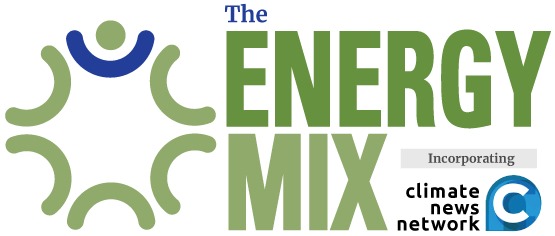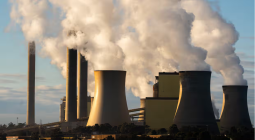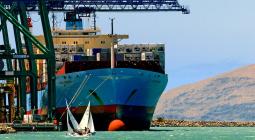IEA Proclaims ‘Age of Electricity’ as Batteries, Solar Surge—But Emissions Still Way Off Course
The world is set to make abundant clean energy by the second half of the decade as the production of batteries and solar panels surges—but there’ll still be an excess of planet-warming fossil fuels, a report released Wednesday by the International Energy Agency said.
“We’re now moving at speed into the Age of Electricity,” IEA Executive Director Fatih Birol said in a media statement marking the release of the agency’s annual World Energy Outlook (WEO). Energy supplies worldwide will “increasingly be based on clean sources of electricity,” he said.
But the world is still way off what’s needed to cap global heating at 1.5°C above preindustrial times—the limit set in the Paris Agreement—because emissions would decline too slowly, The Associated Press reports. Consistent with its analysis over the last year, the Paris-based IEA expects demand for oil and gas to peak later this decade, but still put the world on pace to hit 2.4°C of warming.
China in particular—the world’s current biggest emitter of greenhouse gases but also the main manufacturer of solar panels and batteries—is driving global energy trends, the report states.
In recent years, China has accounted for most of the growth in oil demand, but electric vehicles now make up 40% of new sales of cars there, and 20% of sales globally, putting major oil and gas producers “in a bind.”
The report indicates that China’s emissions of planet-warming gases may peak by 2025, but “given the changes under way in China we think that might be a bit pessimistic,” said Bill Hare, CEO of Climate Analytics.
Hare said “there’s every chance” China’s emissions have already peaked in 2023, but more data is needed to be sure.
China already accounts for half the world’s electric cars on the road. By 2030, it’s projected that 70% of new car sales in China will be electric. With its massive additions of new wind and solar power, China is aligned with its target for addressing climate change.
Renewables Surge
Just last week, the IEA increased its forecast for global renewable energy deployment this decade by two-thirds in a major report released earlier this week.
“WOW,” Carbon Brief Deputy Editor and Senior Policy Editor Simon Evans wrote in a LinkedIn post after the IEA released [pdf] its Renewables 2024 report. “Just nine months ago, in January 2024, its Renewables 2023 report forecast 3,200 gigawatts of capacity—mainly wind and solar—would be built around the world during the five years 2024-2028. Now, in Renewables 2024, it’s significantly increased that forecast, to 3,700 GW over the same five years—and a massive 5,500 GW by 2030.”
That means the IEA “is now forecasting two-thirds more renewable capacity being built than just two years ago.”
That total translates into a 2.7-fold increase in global renewables capacity through 2030, with renewables growth expected to exceed government targets by nearly 25% thanks to supportive policies in around 140 countries and favourable economic conditions.
The IEA says installed capacity will still fall short of the COP28 climate summit goal of tripling total capacity to 11,000 GW by 2030. However, that target is still “entirely possible” if governments make bold plans in their formal commitments under the Paris agreement, set to be announced next year, and work together to lower financing costs in developing regions like Africa and Southeast Asia, where renewable growth is being held back.
“The world’s renewable power capacity is expected to surge over the rest of this decade,” the IEA wrote in a release. Globally, additions are on course to equal the current capacity of China, the European Union, India, and the United States combined.
“Renewables are moving faster than national governments can set targets for,” Birol said. “This is mainly driven not just by efforts to lower emissions or boost energy security—it’s increasingly because renewables today offer the cheapest option to add new power plants in almost all countries around the world.”
By 2030, renewables are expected to meet half of global electricity demand, Birol added.
China, Solar Photovoltaics Lead the Way
In the renewables report, as well as this week’s WEO, China is projected to dominate renewables growth, accounting for 60% of global capacity expansion. “The country is forecast to be home to every other megawatt of all renewable energy capacity installed worldwide in 2030,” the report states, surpassing its goal of 1,200 GW for solar PV and wind energy six years early.
Globally, solar will be the top performer, making up 80% of the growth in renewables out to 2030. “Adoption accelerates due to declining costs, shorter permitting timelines, and widespread social acceptance,” writes the IEA. (The IEA’s confidence here runs counter to warnings about the harm that community pushback is doing to renewable fortunes—Ed.)
The agency further predicts growth of distributed applications among residential and commercial consumers “as more households and companies seek to reduce their electricity bills.”
Key Players: U.S., EU, and India
The IEA sees renewables growth continuing in the United States, largely due to tax credits available through the Biden-Harris administration’s Inflation Reduction Act, while competitive auctions and corporate power purchase agreements will drive expansion in the EU.
Europe’s 600-GW solar PV ambition for 2030 is within reach, “but more effort is needed for wind,” writes the IEA. Globally, wind is projected to double its rate of expansion between now and 2030, compared to the period between 2017 and 2023.
Meanwhile, India is set to be “the fastest growing renewable energy market among large economies” due to a rapid expansion of auctions, a new support scheme for rooftop PV, and stronger financial indicators for utility companies.
Among other renewables, hydropower is expected to “remain steady,” while bioenergy, geothermal, concentrated solar power, and ocean energy are expected to decline due to a lack of policy support.
Hydrogen remains “a negligible driver” out to 2030, supplying only 43 GW of new capacity, less than 1% of total global renewable energy expansion—mostly due to “insufficient demand creation,” the IEA says.
Rising Demand Drives Fossil Fuel Emissions
The clean energy expansion, however, is happening alongside a rise in demand for energy, including power produced by burning coal, the World Energy Outlook concludes. “This has meant that even as we saw record growth in clean energy installations and additions, emissions kept increasing,” Lauri Myllyvirta, lead analyst at the Centre for Research on Energy and Clean Air, told AP.
Electricity demand is growing even faster than expected, “driven by light industrial consumption, electric mobility, cooling, and data centres and AI,” the report said. The contours of switching heating, vehicles, and some industry over to electricity, it said, are also beginning to become clear.
Globally, the IEA affirmed that the expansion of wind and solar power alongside the increasing adoption of EVs will ensure a peak in demand for coal, oil, and gas within the decade, with carbon emissions also reaching their highest point and ramping downward.
But as China’s rapidly switches toward batteries and renewable energy, the IEA projects that India will add nearly two million barrels per day of oil to its demand by 2035, potentially offering a lifeline to oil producers looking to offset declining growth in other regions.
Laveesh Bhandari, president of the New Delhi-based Centre for Social and Economic Progress, said India’s booming economic growth means it will take the energy it can get.
“While demand for EVs will rise exponentially, the growth will not be able to cover all of the additional growth in demand for vehicles,” Bhandari said. “So fossil fuel-powered vehicles use will increase for some time before leveling off and falling.”
Capacity Challenges
The Renewables 2024 report urges countries to announce more ambitious plans in their next Nationally Determined Contributions under the 2015 Paris deal, writing that only 14 countries had explicit renewable capacity targets before COP28.
Efforts must also address the chokepoints renewables projects face, like lengthy timelines for permits, grid connection wait times, and high financing costs, especially in emerging and developing markets.
At least 1,650 GW of renewable capacity is in advanced stages of development and waiting for a grid connection, says the IEA. That is 150 GW more than last year, but grid connection times are slowly improving.
“Queues to integrate energy storage are also significant as deployment rises,” the IEA warns. Higher curtailments are another concern, as renewables capacity meets a grid not ready to welcome it.
“In Chile, Ireland, and the UK, the curtailment of wind and solar PV recently reached between 5% and 15%,” writes the IEA. “Despite growing investment in battery storage in many of these markets, further flexibility measures, including long-term storage and large-scale demand-response, will be necessary.” This applies to Chile, where solar and wind penetration will be close to 70% by 2030, as well as Portugal, the Netherlands, and Germany.
The IEA also suggests establishing criteria beyond “just price” when awarding renewable power capacity. This “new tool” aims to avoid direct trade measures, with nearly 60% of all capacity awarded in auctions worldwide now including non-price criteria such as sustainability and supply chain security. While this may lead to higher short-term prices, it can promote system optimization and support domestic socio-economic goals.
Sustainable transportation fuels are crucial for meeting international climate goals, the IEA writes, but their growth is lagging due to higher costs compared to fossil fuels, keeping their share of global energy below 6% by 2030.
Cover photo: 李大毛 没有猫 / Unsplash




